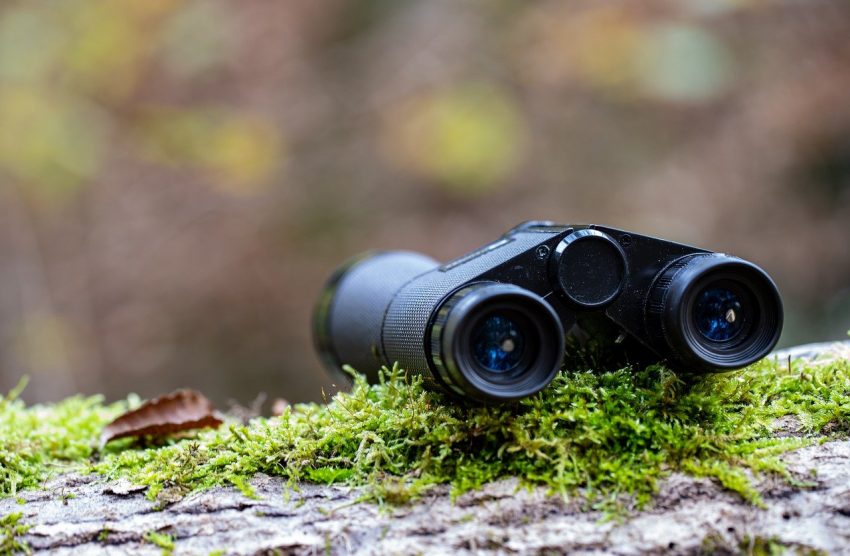What defines hunting? Skill, weapons, and a good set of eyes. And there’s no better gear well-equipped to assist you to widen your vision than a good pair of binoculars. But to decide what’s best for you, you need to know how to choose binoculars for hunting.
Not all binoculars can benefit you in your chase against a deer. To avoid any mistakes, you need to know all about hunting binoculars before you take your pick. In this article, you will learn about the different types of binoculars and their application. Besides, what things do you need to consider before buying hunting binocs and maintaining the one you own.
What Types of Binoculars Are There?
With hundreds of binoculars available in the market, sometimes it gets tough to choose from so many different types. Below I have noted the most common type of binoculars available and what purpose they serve.
Porro Prism Binoculars
Porro prism binoculars are the first set of modern binoculars. These binoculars send the light through a pair of prisms in a quick horizontal zigzag light path. Therefore, the light coming from the objective lens amplifies and provides a 3D sharp image of the target. Also, they offer a wider field of view for activities like astronomy, sports, scouting, hiking, etc.
Roof Prism Binoculars
The roof prism system features a roof-shaped surface for a higher magnified and brighter image than Porro binos. It is due to the straight series of convoluted pathways created by the prisms in-between the eye and the objective lens. So, these compact binoculars are more straight tubular, stylish, and lightweight than Porro binos. Roof prism binoculars are used for birdwatching and hunting.
Field Glasses
Field glasses only use optical lenses for magnification. The convex objective lens functions as the objective. On the other hand, the concave lens functions as the eyepiece to create a right-side-up image. Field glasses have a narrow field of view and low magnification power (up to 5x) than prism binoculars. However, these binos are more compact, lightweight, and durable. And, they are often used for watching sports, opera, horse racing, etc.
Night Vision Binoculars
Night vision binoculars allow you to see in the dark with electronically assisted optics. It amplifies light through photocathode, photomultiplier, and phosphor screen. As a result, your eyes manage to see in low-light conditions such as spelunking, hunting, wildlife observations, and surveillance.
Marine Binoculars
Marine binoculars have a broader objective and ocular lenses that offer a wider field of view but low to moderate magnification power. Besides, these binoculars come with rubber coating and are highly durable, fog-resistant, and waterproof. The common uses are marine operations, whale watching, and snorkeling.
Things to Consider When Choosing the Right Binoculars for Hunting
Binoculars are an essential element of hunting, whether it’s early morning or late afternoon. But, it’s difficult to find good hunting binoculars on a budget. Here are a few things you need to consider before choosing a pair of hunting binoculars.
Magnification
If you are searching on the internet, you may have come across binocular descriptions like 8×50. Here 8 is the magnification factor, meaning the binocular can magnify an object up to eight times. 50 is equal to the objective lens diameter.
In general, a magnification factor from 7x to 10x is well suited for hunting as it provides better stability. However, many compact hunting binoculars offer stability features nowadays. So, you can go as high as 20x magnification but with extra expenses.
Field of View
A wide objective lens size means a detailed and brighter image due to a greater field of view. In general, the field of view goes up to a distance of 1000 meters. Smaller objective lens diameter provides higher magnification. So, the field of view decreases if the magnification is high.
The flip side is, binoculars with a larger objective lens are costly. So, it’s better to stick around 40 mm of objective for a pair of hunting binoculars.
Eye Relief
Eye relief refers to the distance between your eye and the eyepiece. Insufficient eye relief will not allow you to see a clear image, putting stress in your eyes.
If you wear glasses, then get a pair with adjustable eyecups or the one with 14-15 mm of eye relief.
Extra Features
While hunting, you never know what condition you are about to be in. So, it’s always a relief to have waterproof binoculars. Some hunting binos are even for-resistant as well.
Also, look for rubber coating as it provides a better grip if your palms get all sweaty or wet.
Design and Budget
Last but not least, you need to look for prism binoculars as the perfect hunting accessory. Field glasses are cheaper, but they are not well-suited for hunting.
Prism binoculars provide better magnification and adjustable eyepieces, which come in handy while chasing an animal track. These binoculars are a bit expensive, but you have hundreds of different products from different manufacturers to choose from.
Tips to Maintain a Binocular
Surely a pair of high-configuration binoculars will help you track your prey, but maintaining the binos will ensure efficiency in the long run. Here are some tips for maintaining your hunting binoculars.
Clean your lenses
Keep your lenses dirt-free with a soft brush or compressed air, and then use a cleaning solution on a piece of cloth to gently clean the lenses.
Adjust your eyepieces
Most hunting binos feature adjustable eyepieces to focus on a specific target. Carefully use this feature depending on your surroundings and distance to get the best picture possible.
Avoid direct sunlight
Avoid leaving your binoculars under the direct sun for long periods of time. A prism may wear out as it absorbs and blocks infrared and ultraviolet light spectrum.
Seek professional help
Prism and night vision binoculars are sensitive due to their complex mechanism. Always let a professional take care of your hunting binoculars if necessary.
Conclusion
Imagine backpacking a telescope every time you go out hunting. Not a pleasant thought, is it? Binoculars have changed the hunting game for good. But, you have to learn the differences and know the things that matter in a pair of hunting binoculars. Besides, maintaining a binocular is pretty easy. But I highly recommend seeking professional help if you face any difficulty that’s beyond your reach. After all, binoculars are your second set of eyes while tracking an elk down the ridge!

